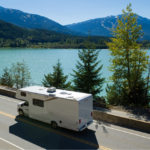With the abundance of options available, it might be difficult to determine how much car insurance you need. After all, there’s need to have, and there’s nice to have. Several factors should be taken into consideration when determining how much coverage you need because the cost of repairing or replacing your car can be a significant financial burden, as well as a major inconvenience. The right insurance policy should cover these costs and protect you, your family, and your assets without putting your budget at risk.
So, how much car insurance do you need? Here are the variables you should consider when making that decision.
Familiarize yourself with state minimums
Only two states don’t require drivers to carry car insurance: New Hampshire and Virginia. All other states require car owners to purchase some type of car insurance. But whether auto insurance is required or not, there’s too much potentially at risk to carry none at all. Here’s an overview of the various coverages you should consider.
Liability insurance
Liability insurance covers you if you get into an accident, and it’s determined that you’re at fault for property damage and injuries to others. This covers other people’s expenses, but not your own. This is a required coverage in the vast majority of states.
Uninsured and underinsured motorist
Even when a state has insurance requirements, not everyone follows the rules. In fact, about one in eight drivers don’t carry car insurance according to a 2021 report from the Insurance Research Council. This is when uninsured motorist coverage comes in handy. Also, when an at-fault party’s insurance isn’t enough to cover the costs of an accident, underinsured motorist coverage saves the day! 22 states require uninsured motorist coverage, and 14 states require underinsured motorist coverage.
Personal injury protection (PIP) or medical payment (MedPay)
Both PIP and MedPay cover medical costs for you and your passengers after an accident, regardless of fault. The main difference between PIP and MedPay is that PIP also covers lost wages and childcare. PIP is required in 12 states, and MedPay is required in two states. You’ll find an update on which states require what online.
Each state has a minimum amount of car insurance drivers must purchase. However, it might be a good idea to purchase higher coverage limits than what a state requires. Sometimes the overall cost of an accident can exceed coverage limits. In the event that you’re at fault and damages exceed the amount on the policy, you’re required to pay for these costs.
Buying the minimum gets you around the law, but may not provide enough protection to avoid financial ruin. In some cases, courts can seize assets and garnish wages to pay for the damage you caused in an accident. Consider the value of your assets, which may include your income, savings, properties, and business ventures in order to help you determine how much car insurance to purchase so that your belongings are adequately protected in the event of a lawsuit. Purchasing enough liability insurance to protect the value of your assets in their totality protects you from financial ruin if you’re at fault in a more serious accident. The difference in cost between higher limits than a state’s minimum usually isn’t much. This is also why it’s a good idea to have some type of car insurance even if your state doesn’t require it.
Think about the value of your car
Depending on the value of your car, you might need more or less coverage. For cars with low cash value, liability coverage might be enough. But, for more expensive cars, consider purchasing comprehensive and collision coverages. Be careful, the cost of even minor repairs may surprise you. There are websites designed to help you estimate auto repair costs such as Kelly Blue Book or AAA.
Collision coverage
Collision covers damage to your car in accidents with other cars or inanimate objects, regardless of what you collide into, or fault.
Comprehensive coverage
This insurance picks up where collision coverage drops off and adds an extra layer of protection against accidents that aren’t a collision, such as weather events, accidents with animals, theft, or vandalism. Consider whether or not you live in a disaster-prone area that can cause damage to your car. For example, car owners who live in areas that see a lot of flooding or wildfires might benefit from having comprehensive coverage.
The 10% Rule
As a first step in figuring out how much insurance you need, you’ll want to determine the value of your car and if you can afford to replace it with out-of-pocket funds. Many people defer to the 10% rule when deciding if they need comprehensive and collision coverages. The 10% rule guides people to drop comprehensive and collision coverages when the cost of a policy exceeds 10% of the car’s cash value. The premise behind this rule of thumb is that the most you can get to repair your car is the book value of the car, so paying 10% or more for that coverage is a diminishing return. For example, if your car has a book value of $4,000, 10% of its value would be $400. If the premium for comprehensive and collision coverage exceeds $400 a year, it might be a good idea to drop them.
Does your lender have coverage requirements?
For people who have a loan on their car, their lender might have coverage requirements beyond state minimums. Comprehensive and collision coverage are typically required by lenders, with some lenders also requiring gap coverage. Because the lender legally owns the car, requiring additional coverage provides them financial protection in case of an accident.
How much you can afford?
If you can afford higher limits, then it’s likely worth the peace of mind and the added layer of protection from the unexpected. Car accidents are expensive, and out-of-pocket costs quickly add up without insurance or with minimum coverage. Always remember that car insurance serves a purpose beyond protecting your medical costs and the costs to repair your car after an accident. It should also help protect your other assets if you become embroiled in litigation after an accident. Don’t be penny wise and pound foolish as they say. Carry as much liability coverage as you can afford, especially if you have a high net worth.
Other assets to protect means other coverages to consider
Everyone has unique coverage needs depending on the totality of their circumstances and finances. Think about your needs, and consider purchasing the following types of car insurance.
Umbrella policy
This supplemental policy provides additional liability coverage once you’ve exhausted other liability coverage limits. If you don’t think the highest available levels of liability coverage would be enough to protect your assets in a serious accident, consider purchasing an umbrella policy.
Gap coverage
If your car is financed, this type of coverage covers the difference between a car’s cash value and the balance on your loan if it’s totaled. Gap coverage is valuable for people financing a newer car. It’s no wonder your lender may require you to carry this type of insurance on your car.
Roadside assistance
This type of insurance covers the cost of locksmith services, tow trucks, or basic repairs on the side of the road. If you drive often, rely on your car for work, or take long trips, roadside assistance is a good way to ensure you aren’t left stranded in an emergency.
Rental reimbursement
Rental reimbursement pays for a rental car if your car is in the repair shop because of an accident. You may or may not be covered for the cost of a rental when another driver leaves you stranded and is at fault. But for true peace of mind, just like with roadside assistance, this could be good insurance to buy.
Non-owner insurance
For people who don’t own a car, but still drive from time to time, a non-owner insurance plan provides liability coverage in case of an accident.
It’s hard to put a monetary value on the sense of security that having the right car insurance policy can provide. But you can put a value on the cost of repairs and replacement based on the car you drive. So start there. The amount of insurance you need depends on a multitude of factors, including what state you live in, how much insurance you can afford, lender requirements, the value of your car, and your total net worth. Your lifestyle and dependency on your car are also factors to consider when determining how much car insurance you need.
It might be hard for you to determine if you have the right amount of coverage to fit your needs, which is why you should connect with us for a car insurance review. Our team can help you find which car insurance you need based on your unique risk profile.









